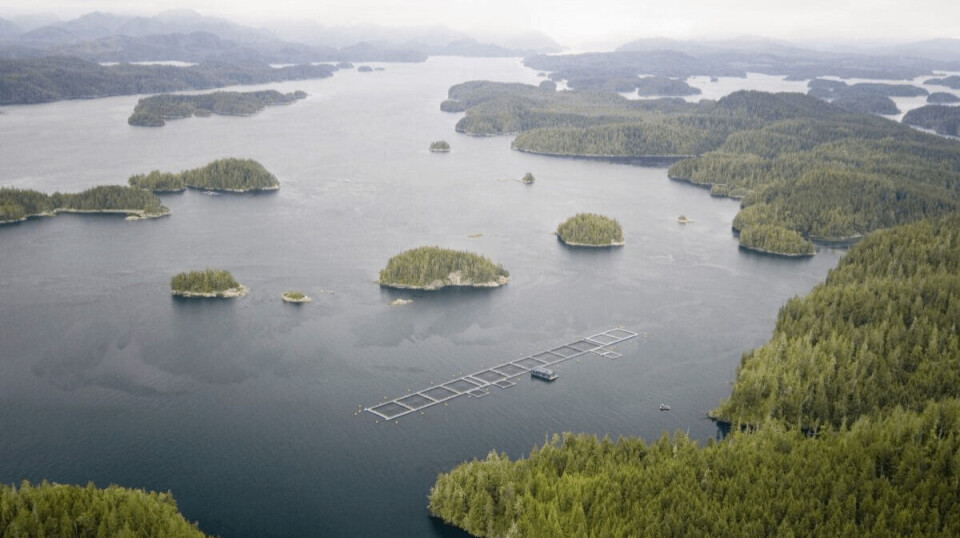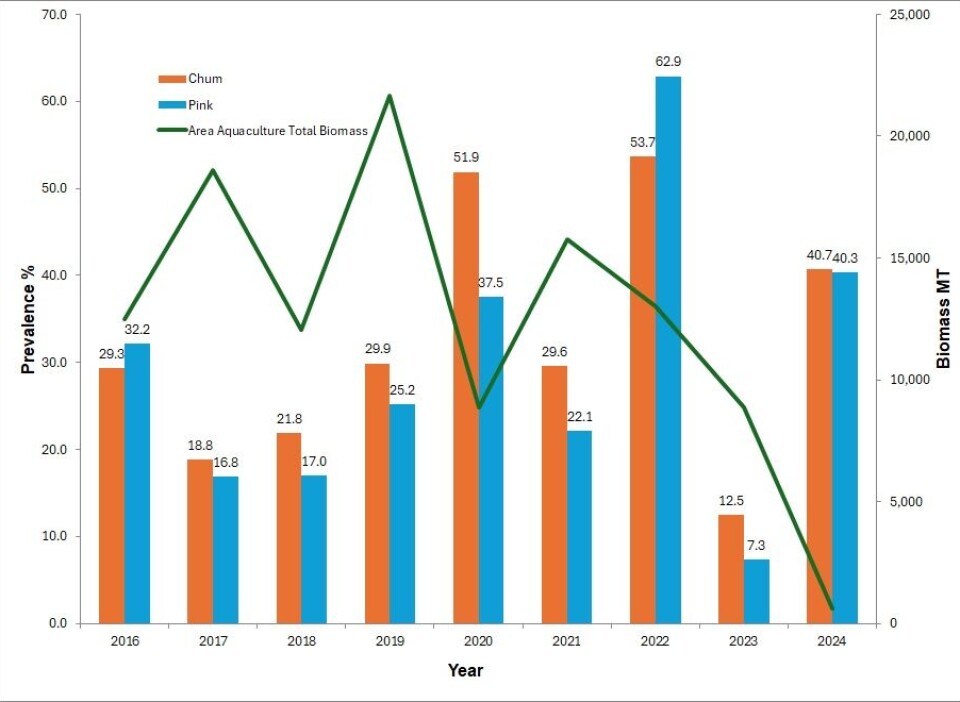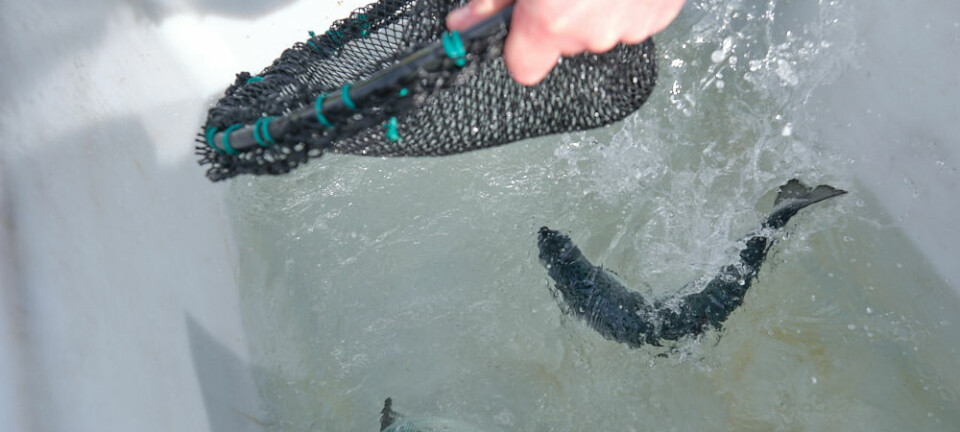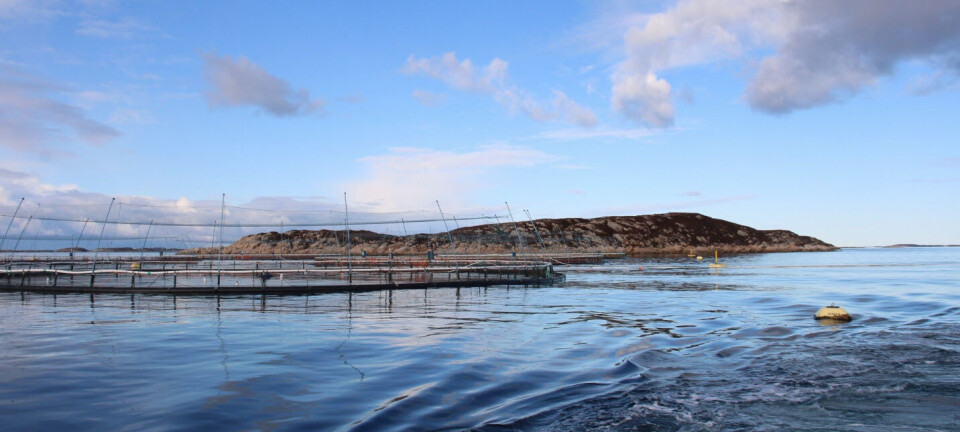
'No farms but still lice - again'
British Columbia salmon sector highlights study by Canadian scientists and Scottish university statistics expert that further challenges anti-fish farm narrative
A recently published peer-reviewed paper in the Diseases of Aquatic Organisms provides strong evidence that the removal of salmon farms in the Broughton Archipelago in western Canada has not reduced the amount of sea on wild Pacific salmon.
The paper reviewed sea lice monitoring data collected between 2016 and 2024, demonstrating that natural environmental factors, not the presence of salmon farms, are the primary drivers of sea lice prevalence on juvenile salmon in British Columbia.
The paper analysed nearly 3,000 juvenile chum and pink salmon over nine years that included the phased removal of salmon farms from the region. Even with aquaculture production in the Broughton reduced by more than 95%, from 21,645 tonnes in 2019 to just 614 tonnes in 2024, sea lice levels on wild salmon remained unchanged or even increased in some years.
A range of processes
“This study provides clear scientific evidence that the removal of salmon farms does not invariably lead to reduced sea lice infestation levels on wild Pacific salmon,” said Dr Crawford Revie, Professor of Data Analytics at the University of Strathclyde in Scotland. “These findings highlight the importance of understanding the range of natural environmental processes that shape sea lice population dynamics.”
The data (Figure 1 below) show no correlation between salmon farm biomass and sea lice prevalence (percentage of fish with sea lice) on wild salmon over the nine years of monitoring. In fact, the prevalence of sea lice spiked in 2022, when aquaculture production was already in decline, and increased again in 2024 after almost all farms were removed. Additionally, there is a lower prevalence of sea lice in years of peak biomass production, such as 2017 and 2019.

Adds to previous findings
This new analysis builds on previous findings from research released in April, reviewing eight years of data in the Discovery Islands in BC, which similarly showed that the presence of sea lice remained unchanged following the removal of salmon farms. An extensive literature review released last year also identified overestimations of the effects of sea lice from salmon farms on wild Atlantic salmon.
Further supporting the recent findings, the Canadian Science Advisory Secretariat’s (CSAS) 2022 Science Response, with an updated paper released in June, showed no causal relationship between salmon farms and sea lice on wild Pacific salmon. The BC Salmon Farmers Association (BCSFA) said that together, these studies form part of a growing body of evidence that challenges the assumption of “no salmon farms = no sea lice”.
Additionally, Ahousaht First Nation, Maaqutusiis Hahoulthee Stewardship Society (MHSS) and Cermaq Canada announced earlier this week that, through collaborative advancements in sea lice management, Cermaq has conducted zero mechanical treatments and maintained a lice level of 0.30 over the last 12 months.
Affordable protein
“Now more than ever, Canada needs homegrown, responsibly-raised and affordable protein,” said Brian Kingzett, executive firector of the BC Salmon Farmers Association.
“With the federal government’s new focus on advancing the competitiveness of Canada’s fish and seafood sector and ongoing research supporting farm-raised and wild Pacific salmon co-existence, now is the time to reconsider the policy decisions harming rural communities and undermining food sovereignty.”
Last year the federal government announced that open-net salmon farming in BC will be banned by mid-2029.
The BCSFA said that beyond the science, this issue has broad implications for Canada’s food security, economy, and rural coastal communities. Salmon farming in BC generates thousands of jobs, provides a low-carbon source of protein, and supports rights and title through agreements and partnerships with First Nations whose territories the farms operate in.
























































